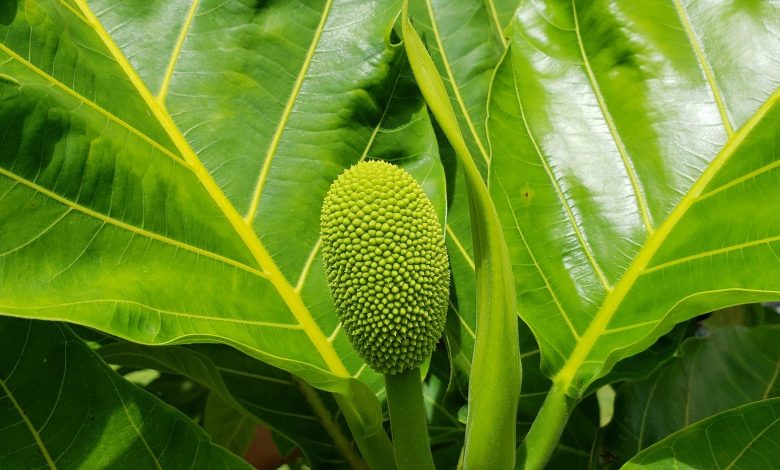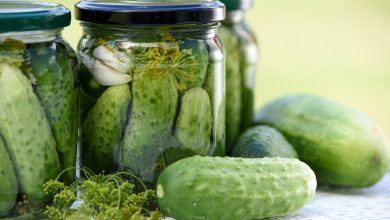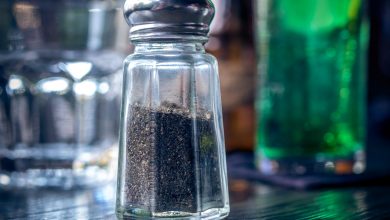Types of Exotic Fruit Trees and How to Grow Them

There are some exotic trees out there that you probably have never heard about that provide delicious fruits. Even if you’re not a known food connoisseur, you may find this information quite interesting. So without any further ado, here’s a look at how you can grow some of the most exotic food plants.
Breadfruit Trees
The first one on the list is a commonplace food in many Caribbean regions, such as Jamaica. However, it is a scarce and even unknown food in many other regions of the world. Now, you may be wondering what’s going on with the name, but it couldn’t be more appropriate. You see, when the fruit is not yet ripe, the taste and texture that you get are those of fresh bread.
A mature breadfruit tree can grow as tall as 85 feet. Depending on the climate that you find this tree in, the leaves can be either deciduous or green. Cultivating these trees and keeping them healthy are always rewarded, as a healthy breadfruit tree can yield up to 100 fruits annually. Note that these fruits are quite large, and they tend to be consumed by multiple persons, so 100 is no joke.
Growing Breadfruit Trees
The first thing you need to know about growing breadfruit trees is that they grow in tropical and subtropical regions. Much of North America is conducive to breadfruit tree growth; however, the crop is simply not that common there.
You need to get your hands on some root shoots if you plan to grow breadfruit trees. Once you can get them from the ground with about five inches of root on either side, you should be good to go.
Now, you may think that it’s time to get them in the ground, but for best results, you may not want to go there just yet. Instead, you should put them in a pot, bag, or another container for the first three to five weeks. Note that, if you did opt for using a bag, then the bag needs to be tied for this time. Fifty percent shade is recommended.
The potting mix that you use needs to be of a high quality. To that end, you may want to consider one that has composted bark, coconut coir, or peat moss. You can move the root shoots to direct sunlight once the roots have managed to grow to the edge of your container or bag.
Caring for Breadfruit Trees
Water is essential to any flower, and these exotic flowers are no different. In fact, these shoots need an immense amount of water to survive. So don’t forget to get the watering done as regularly as is possible.
Breadfruit trees are notoriously hardy, and they need little to no care once they have gotten to that stage. Be that as it may, the root shoots are not so durable. Most breadfruit crops that die are killed by a lack of moisture. This causes them to dry up and die surprisingly quickly.
To avert such a crisis, all you need to do is ensure that you check the leaves daily for any signs of unusual dryness. In about three to five months, your plants should be ready for the ground. Take note of the size of the roots, as you want to ensure that the space you dig is twice that size.
As you plant them into the ground, water them thoroughly, and avoid wetting the leaves. Within three years, you should start seeing fruiting.

Baobab Trees
This African treasure has an alternate name that may make you think twice about eating anything from it. While Juda’s bag, lemonade tree, and monkey-bread tree aren’t bad ones, hearing “dead rat tree” may turn you off a bit.
Though it is well known in Africa, and the name “baobab” is of North African descent, six of the eight varieties that exist are all native to Madagascar. These trees tend to produce their leaves during the rainy season, which are then shed during the dry season.
Flower production also takes place during this dry season. These flowers are large and white. While they are closed during the day, they open at night and are pollinated by bats that enjoy feeding on the nectar.
These exotic flowers give rise to a hard, gourd-like, and large fruit that has a tart-like and slightly sour flavor.
Growing Baobab Trees
You don’t need to have a green thumb to be successful at growing baobab trees. This is because they fall on the low maintenance end of the plant care spectrum. Once you meet certain basic requirements, there should be nothing to worry about.
You have two options for growing baobab: from cuttings or seeds. Feel free to whichever is more conducive to your needs.
If you decide to grow it from cuttings, then things are a little easier for you. All you need to do is ensure that there are at least three leaves present on these cuttings. You may be setting yourself up for disaster if there are fewer. Note that the cuttings should be taken in spring for best results.
Stem rot and fungal attacks can be tough issues to deal with where the cuttings are concerned. Therefore, it’s best for you to wait a bit before you plant them. Give it a few days to allow the cuttings to dry. While this doesn’t mean that you don’t need to worry about the problems mentioned, the chances of having to deal with them diminish tremendously when the cuttings can dry.
You can go ahead with your planting once the drying is complete. A mixture of peat and sand is best for healthy growth. Note that the baobab prefers soil that is sandy and has good drainage. While you can do the soil blending yourself, premixed cactus soil is excellent for these plants since there is better soil aeration, and root rot is prevented.
If you decide to grow your baobab plants from the seed level, then there’s a bit more to do. This is to be expected because a seed is way less developed than cuttings are. You can’t just sow these seeds right away if you want the best results. First, you need to thoroughly soak them, and this needs to be done at room temperature. The period isn’t anything too crazy, since you only need to have them soaking for a day.
The idea of the soaking is to make it easier for you to reach the white inner layer of the baobab seeds. You need sandpaper to get there, but once the seeds have soaked, this shouldn’t pose much of a problem.
Once you’ve gotten the inner layer exposed, you need to dry the seeds indoors. This is not one of those plants that have an amazing germination rate. In fact, baobab seeds are notorious for having a poor one. Therefore, it is typically advised to sow three times as many seeds as the number of plants that you desire. Note that germination can take place anywhere between a week and several months. If you’ve ever wanted a test of patience, this is the plant for you.
The soil that you plant them with should be anywhere between one and two inches deep, and the temperature is best kept higher than 15 degrees Celsius. Don’t wet the soil too much, as doing so promotes rot. However, the soil should be moist to promote adequate growth.
As soon as the roots form, you can move to start doing planting in pots and in the ground. If you opt to use a pot or some other container, you should ensure that its diameter is no less than seven centimeters.
Since the roots of these plants are so strong, you may find that you need to repot it during the potted growth phase. It’s best to do the repotting when the roots start showing on the upper surface of the soil.
Caring for Baobab Trees
Ass the baobab tree grows, it requires six hours of direct sunlight, at least. If it can get more, then that’s even better. Should the tree grow with too little sunlight, you may find a situation in which the growth of the tree takes an unwanted spindly and slow turn. You may also notice that the leaves turn yellow.
Baobab doesn’t require a crazy amount of water. You could infer this from the fact that this is a crop that is native to Africa’s more arid areas. Watering must be done carefully, and this is the reason that you need to ensure that good drainage is available as you grow these plants.
You need to avoid overwatering at all costs, so some level of checking is necessary before you water. Never water moist soil. If you can’t tell whether the soil is too moist or not, the safe thing to do is to not water it. While the plants don’t tolerate excess water well, they are very tolerant of droughts.
When the plant is young, you can fertilize it with a potassium-rich fertilizer. Ensure that this fertilizer is also low in nitrogen. If you can get your hands on a liquid fertilizer that is succulent, then half the battle should be over. Fertilize the young plants monthly. When the trees mature, fertilization is no longer needed.

Carob Trees
While carob trees are not the most popular, they are cultivated in the places that are familiar with it for their numerous potential uses. The ease with which you can grow carob trees also adds to the allure.
The fruits that the tree yields are sought after for their sweet flavor and their nutritional benefits. If you’ve ever been after a healthier substitute for your chocolate craving, this is probably the answer that you need. Though the fruit is as tasty as it is, consumption is not the main reason that people cultivate carob trees. Instead, they tend to grind the fruit pod into a special flour, and they also use them to create an incredibly potent substitute for cocoa beans.
Growing Carob Trees
Carob trees are surprisingly easy to grow. This is because the seeds are known for the simple and quick germination process. It’s very unlikely that you mess up the planting process, since there isn’t a laundry list of special conditions attached to it.
You can use either fresh or dried seeds for the planting process. If you opt for dried seeds, then you need to soak and scarify them prior to planting. Once they double in size, then they’re ready to be planted. Planting should be done during spring or fall.
The heat of the sun is the best friend of a carob tree, so once it can get full sun, it’s on its way to becoming a healthy tree. Note, however, that hot climates can suffice in the place of a need for full sun. Therefore, partial sun is acceptable in such conditions. Try to put it in a place where it is sheltered from the wind as it grows.
While many plants suffer in less than optimal soil, carob plants welcome poor soil conditions. Arid conditions that are accompanied by deep loam or sand don’t phase the plant. This is the reason that carob grows so well along sloppy hillsides. Though it doesn’t need the best soil in the world, it doesn’t tolerate wet or acidic soil well, and good drainage is required.
Caring for Carob Trees
If you’re growing the tree for its fruit, then you need to ensure that you provide adequate water during dry conditions. Note, however, that the tree is drought resistant and can survive even if there is a lack of water.
While you can fertilize your carob tree, it is not always necessary for healthy growth. You can, however, use well-rotted manure to side dress the plant twice annually. Use a fertilizer that has an 8-3-9 ratio for this.
You don’t need to prune a carob tree, since it’s meant to be wild. However, people who plant them usually want to achieve a certain shape during the young phase of the plant. If this is the case, then pruning should be done in the early phase of the plant’s lifecycle.
Pruning is also necessary at that time to ensure that sunlight manages to penetrate well. Whenever you see diseased, damaged, tangled, or weak branches, you should remove them. Note that there aren’t many diseases that affect carob trees. The most common reason that they die is root rot that happens due to overwatering.

Acai Palm Tree
The next exotic tree is home to the acai berry. The spelling of this word can be a bit deceiving, since the suggested pronunciation is “ah-sigh-ee.” The tree is one of many palm trees, and you can find them throughout South America. The most common location is Para, which is a Brazilian state.
The trees are known for their slender trunks that grow in clumps. This is because one base tends to have numerous trunk growths. As it is a palm tree, the leaves are very long-lasting. However, the older and lower leaves do fall off.
While the fruits are mostly produced during the dry season that runs from July to December, the acai produces fruit throughout the year. The berries are green while they are immature, and they go on to take on a dark purple color when they become fit for consumption. Note, however, that there are some plants that produce fruit that maintain a green color in the mature state. The berries are produced in bunches of 500-900, which is less shocking when you realize that the size of each fruit is that of a small grape or a large blueberry. The diameter is no more than 1.5 centimeters. There isn’t much to eat in each berry, since only 20% is edible pulp. The rest of the berry (its center) is the seed.
While the acai is primarily farmed for its berries, there are some who harvest the “palm hearts” of the plants. Palm hearts can be found near the top of a shoot. These are central tissues that are edible. Unfortunately, any trunk from which a palm heart is collected dies. Be that as it may, the tree tends to survive because of the multiple trunks that come from a base. People don’t usually harvest all the palm hearts of a single tree.
Growing Acai Palm Trees
While there are plantations that house some of these trees, most of them are wild. If you want to plant your own acai palm tree for the berries, then you need to be mindful of the plant’s requirements. The plant is one that is best suited to a tropical and rainy climate, which is the reason that it grows so well in the locations that host it. Therefore, you need to offer the plant a tropical or temperate zone that has high humidity and periods of soil waterlogging. The conditions are those that are found within a normal mature forest.
If you want to plant acai palms, you can do so from either the seed state or by using shoots. If you go the shoot route, then you can’t use the stem, as it doesn’t work. However, there are suckers that you can find at the base of the trunk. Mature acai palms can have over 25 such suckers. Once you can move one to optimal conditions, then you should have no problem.
If you’re using seeds, then you need to keep them in very wet conditions. Any drying may be the end of the line for that seed. It takes 25 to 30 days for germination to occur. About 15 to 20 days post-germination, the seeds must then be moved to either wooden boxes or polyethylene pots.
These plants grow very slowly. Be that as it may, you shouldn’t move them to soil until they are between 20 and 30 centimeters tall. This can take up to five months, and it is best done during wet times.
The soil in which you plant acai trees needs to have a pH from 4.5 to 6.5, and the organic content needs to be high. Sandy loamy soil is preferred. Remember that this is a plant that grows in poorly drained conditions during flood seasons. This means that you cannot afford for the soil in which you place the plant to become dry.
Caring for Acai Palm Trees
Since the acai tends to grow in regions that are thick and dense, such as the Amazon jungle, sunlight is not something that is heavily required. In fact, in the growth phase, any substantial sunlight is likely to kill the plant. When it matures, however, it can tolerate some level of exposure to the sun. There are 8,760 hours in a year, and acai palms tolerate anywhere between 1,400 and 2,500 hours of annual sunlight. That should give you an idea of the kind of plant that you’re dealing with.



